All Publications
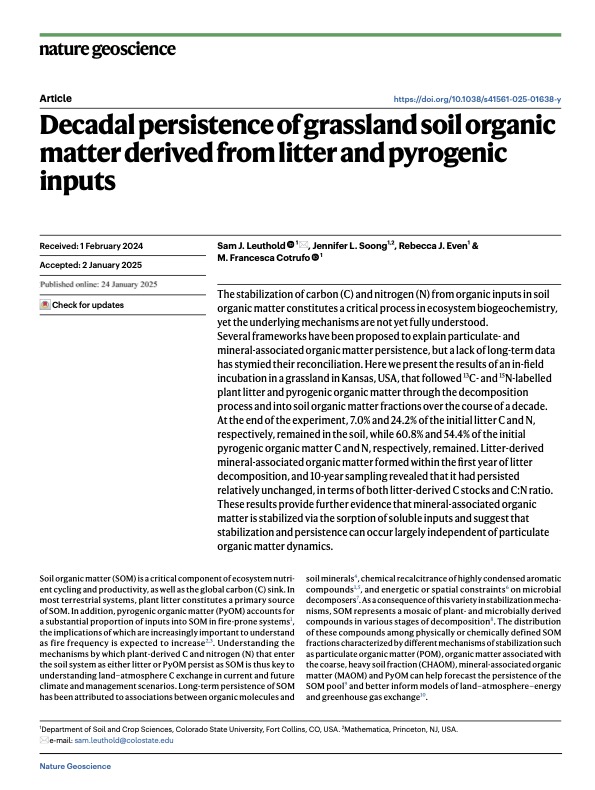
Mechanistic evidence for different decadal SOM persistence pathways
Cited 0 times
Nature Geoscience, 2025
SOM Fractionation
Isotopes
Grasslands
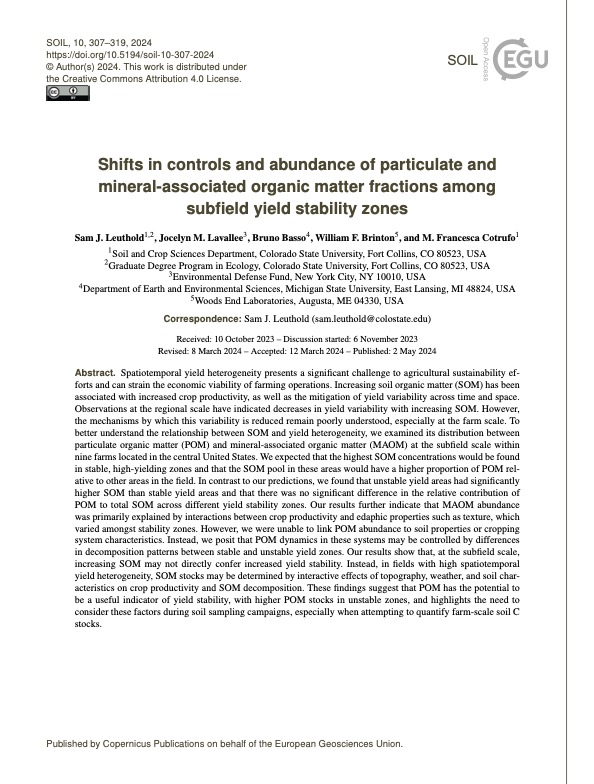
Heterogenous SOM fraction dynamics across yield stability zones
Cited 0 times
SOIL, 2024
SOM Fractionation
Yield Stability
Croplands
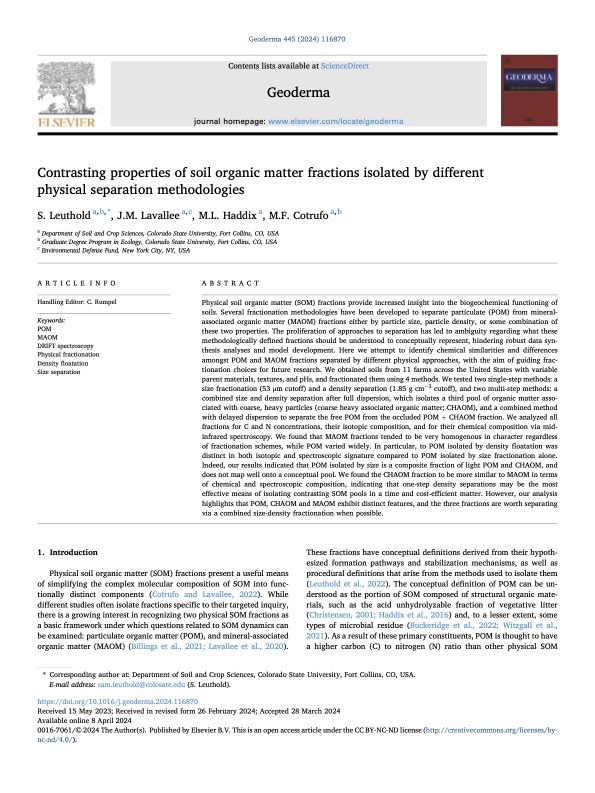
Methodolgical divergence in characteristics of isolated SOM fractions
Cited 19 times
Geoderma, 2024
SOM Fractionation
Spectroscopy
Laboratory
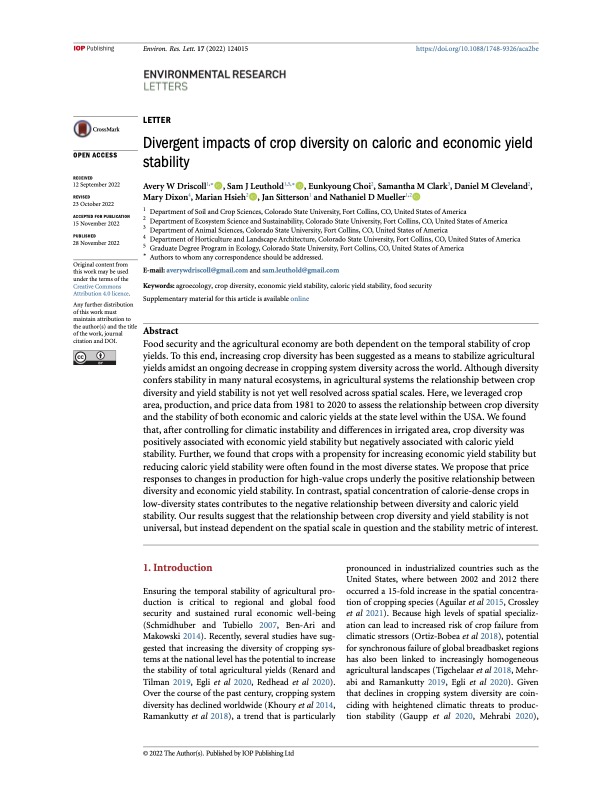
Crop diversity impacts on economic and caloric yield stability
Cited 10 times
Environmental Research Letters, 2022
Data Synthesis
Yield Stability
Croplands
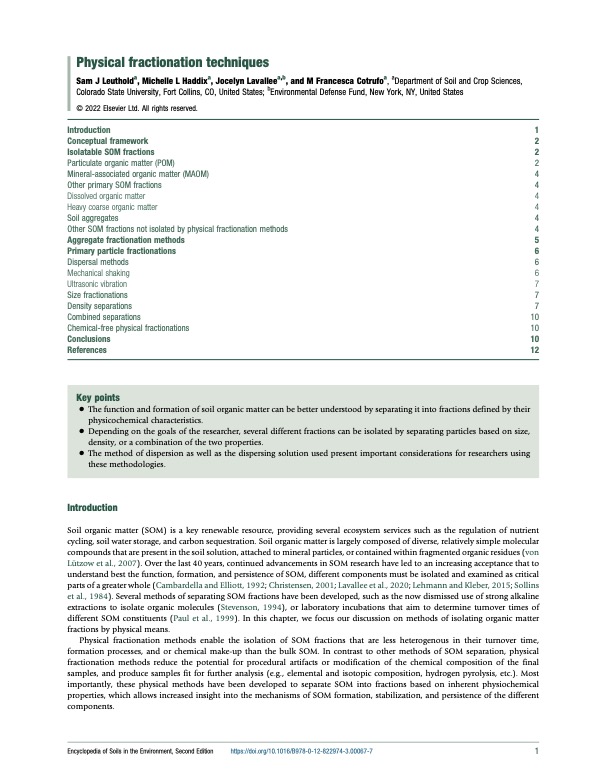
SOM fractionation techniques: A review
Cited 38 times
Encyclopedia of Soils in the Environment, 2022
SOM Fractionation
Croplands
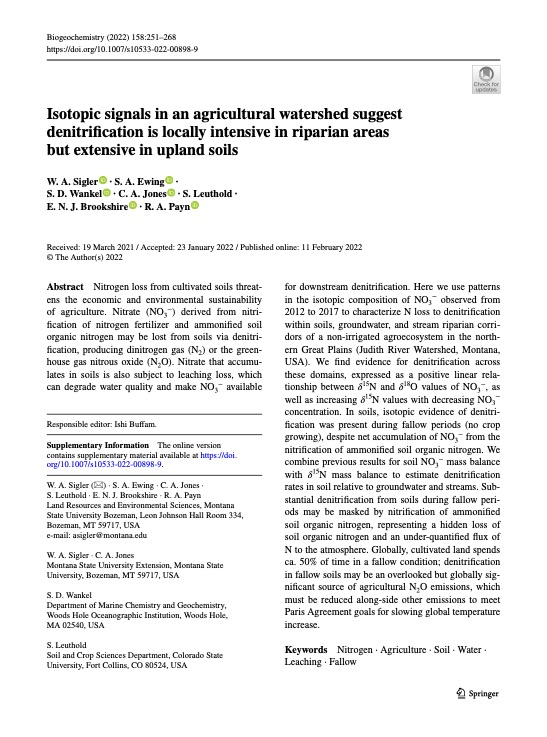
Isotopic evidence for spatially distributed denitrification
Cited 12 times
Biogeochemistry, 2022
Isotopes
Nitrogen Cycling
Croplands
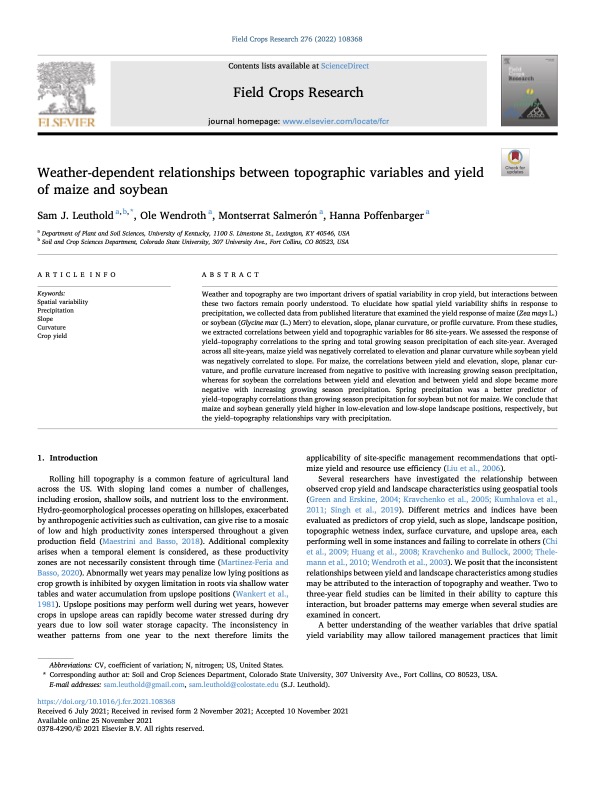
Topographic controls on yield response to climate forcers
Cited 14 times
Field Crops Research, 2022
Data Synthesis
Yield Stability
Croplands
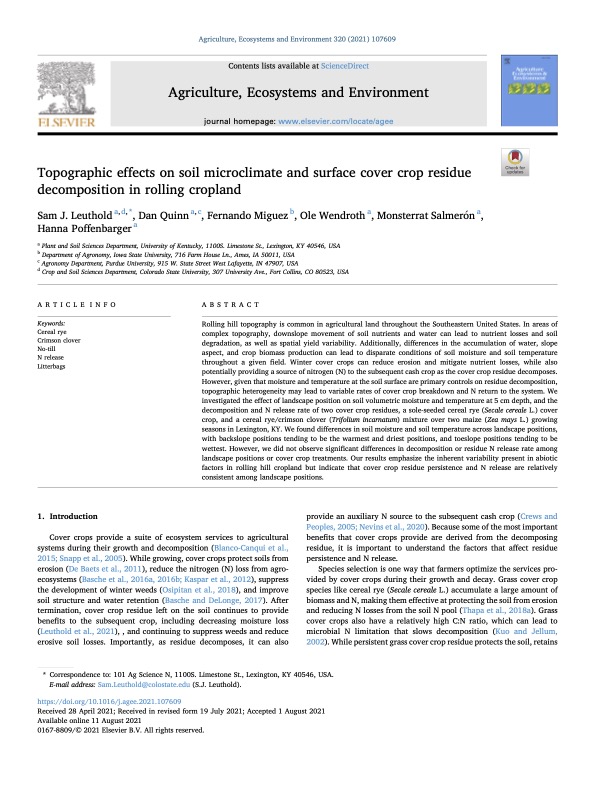
Topographic shifts in microclimate and cover crop decomposition
Cited 13 times
Agriculture, Ecosystems, and Environment, 2021
Field Study
Cover Crops
Croplands
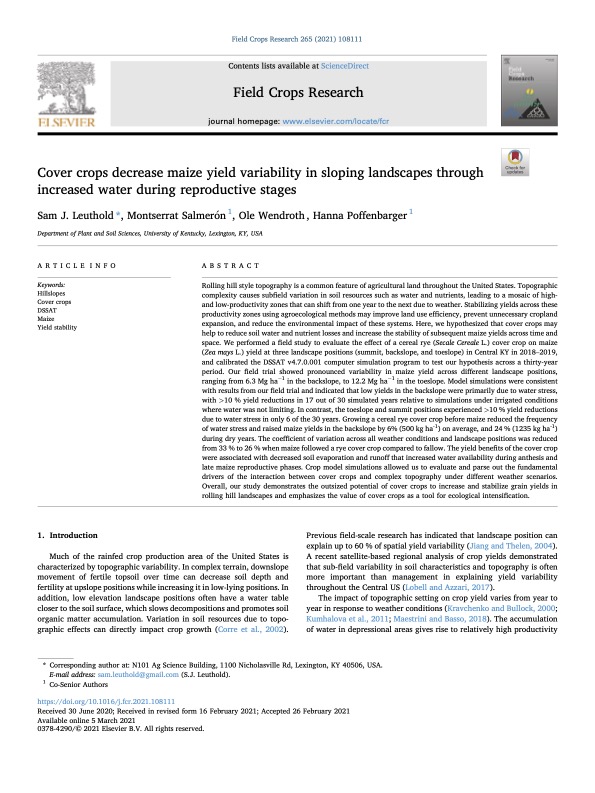
Cover crops buffer yield variability via increased soil water
Cited 17 times
Field Crops Research, 2021
Modeling
Yield Stability
Cover Crops
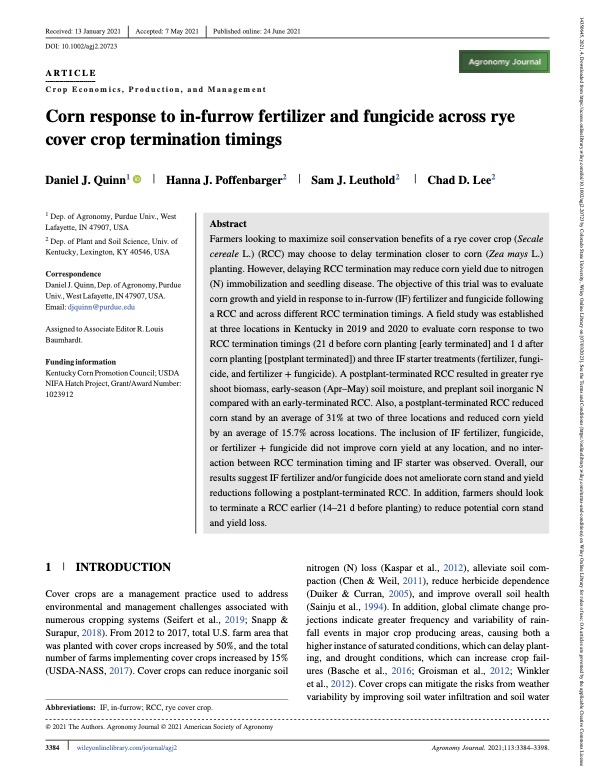
In-furrow input interactations with cover crop termination timing
Cited 11 times
Agronomy Journal, 2021
Field Study
Cover Crops
Croplands
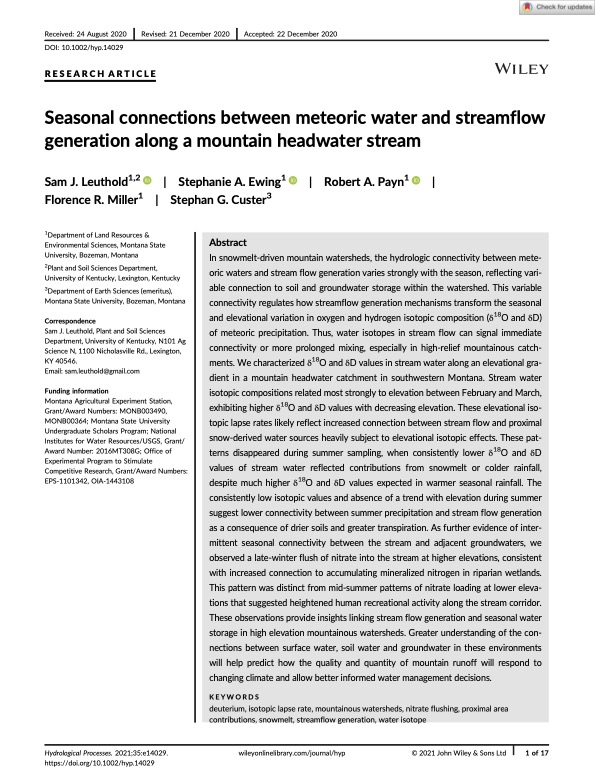
Hydrologic partitioning of precipitation in mountain headwaters
Cited 9 times
Hydrological Processes, 2021
Isotopes
Streamflow
Mountain Watersheds
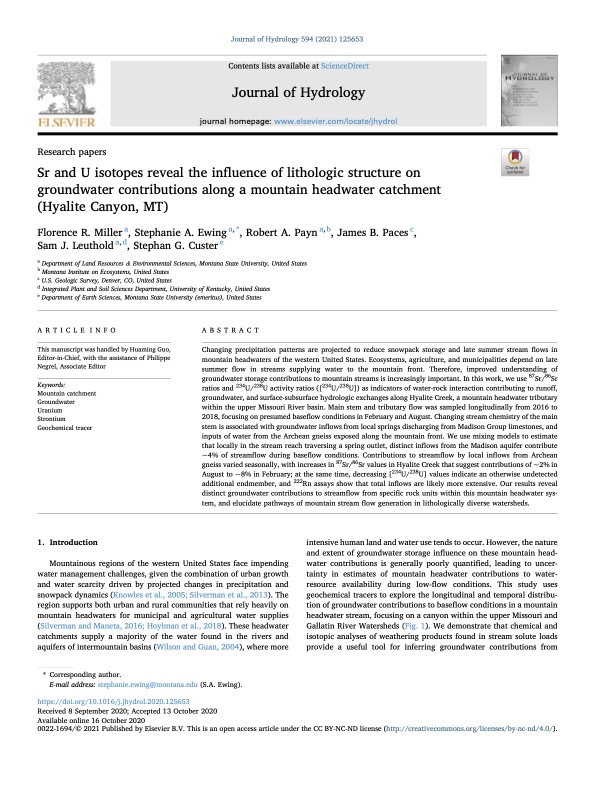
Using Sr and U isotopes to understand mountain baseflow
Cited 0 times
Journal of Hydrology, 2020
Isotopes
Streamflow
Mountain Watersheds